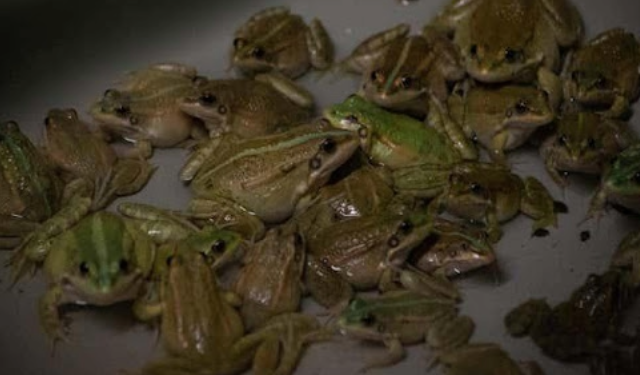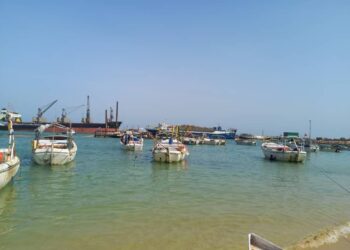Unleashing the Potential: Exploring the Frog Farming Opportunity in Africa – Frog farming presents an opportunity for Africa to tap into its biodiversity and natural resources while promoting economic growth and environmental sustainability. By establishing frog farms, Africa can meet the demand for frogs, create employment opportunities, support related industries, and contribute to the conservation of indigenous frog species. However, it is essential to ensure responsible farming practices, prioritize animal welfare, and abide by legal and ethical considerations. Additionally, research, training, and collaboration with relevant local and international stakeholders are vital for the successful development of the frog farming industry in Africa.
Not many people know about frogs, except that they emit an annoying chirping that draws attention to them in their breeding areas, where they live on the edges of neglected water lakes, swamps, marshes and Country Farms. However, this type of amphibian, besides its great importance in resisting harmful agricultural pests and insects annoying humans, is of interest to educational and research bodies, pharmaceutical companies, as well as it represents a profitable economic source for use as food. It is a business that few know about, although its investments are billions of dollars swimming in the canals and swamps.
It Is a global trade that generates billions of dollars to catch frogs and export them to countries whose citizens eat them as a delicacy. Frog eaters believe that their soup and hind legs have a great nutritional value, equivalent to the value of shrimp and mackerel, and with the growing shortage of animal protein globally, some consider it a cheap, useful and available alternative, especially in the countries of France, Italy, Switzerland and Poland. While it is considered a popular meal in the countries of South and East Asia such as China, Indonesia, the Philippines, Japan and their neighbors, and the majority of South American countries produce, consume and export.
Despite the commercial potential in frog breeding and its pursuit by many countries, it is still surprising that Africa, where it is a staple food, has not yet exploited it.
According to a report published by the food and Agriculture Organization of the United Nations in 2020, frog meat is seen as the “goal of sustainable development“. This indicates the ability of frog breeding to solve the problem of lack of food and nutrition in Africa.
Meat contains nutrients such as protein, amino acids, reduces cholesterol and obesity. It also has the bioavailability of iron and a high calcium content. It is recommended for patients with gastrointestinal tract, allergies, osteoporosis.
Rana frog ” is an animal that lives on land and water and is one of the best types of edible frogs, and this particular species attracts the attention of many countries, and even some peoples, especially the French people, consider Rana meat one of the most delicious foods, as they consume about five thousand tons of “Rana” thighs every year and import 80 percent of this amount from several Asian countries.
Some African countries that hunt and eat frogs. Though there is no notable frog farming in Africa, Africans consider it a delicacy. In countries such as Nigeria and Burkina Faso, there is a market for it.
LET’S DISCOVER SOME ASPECTS OF FROG FARMING AS PER THE PROTOCOLS DESCRIBED BY FAO
Controlled reproduction
Intensive bullfrog farms in Mexico and Guatemala employ indoor breeding facilities, which retain heat through a greenhouse effect. Buildings are divided into three sections:
- A series of 3-5, 25 m2, sex-segregated broodstock-holding tanks;
- A collective meeting area for males and females;
- A series of small (1 m2) spawning puddles.
Water temperature remains constant at 26-28 °C. Light bulbs are evenly distributed in the building, and are automatically time-regulated to maintain a photoperiod of 10D:14L Ambient humidity is kept at 95-98 percent, by using water sprinklers. Breeders are stocked at 10/m2 in section 1, from which ripe individuals are transferred to section 2 at a male: female ratio of 1:1. The stocking density is reduced to 1/m2. Breeders spawn in section 3.
Hatchery
Most farms use their tadpole rearing tanks to incubate fertilized spawns. However, some others have specific incubation facilities. These involve concrete buildings where eggs are placed in small (1 m2) plastic or fibreglass containers. Fertilized eggs are kept in a shallow (5-8 cm), static, chlorine-free, clean water layer in a shaded, ventilated (25-26 °C) site. No aeration is employed. Hatching takes place within 48 hours at 26 °C.
Tadpole rearing
Once tadpoles reach the first-feeding stage, they are transferred to the tadpole rearing tanks. Phytoplankton inoculation is carried out for the first two weeks, and then supplementary feeding is provided 2-4 times a day. The recommended stocking density is 50/m2.
Water quality is maintained by running freshwater continuously through the tank (1-1.5 times/day), or through aeration. Culling is a routine procedure to lower intra-specific competition. Timing to metamorphosis varies greatly among individuals. Precocious tadpoles become froglets in 45 days, while most of the population achieves this in 90-120 days, and a small portion of the cohort (7-12 percent) will metamorphose after one year or more, even in tropical conditions.
Nursery
Nursery tanks are only used in the wet, Mexican system. These are 5.0 x 2.5 x 0.40 m and attached to the tadpole rearing tanks (see photograph in the images gallery). Here froglets are trained to feed on inert, floating pellets. Through routine culling, weaker, slow-growing individuals are removed. Froglets are stocked at between 50 and 75/m2. A 2 cm water layer is maintained permanently. Young frogs are fed ad libitum at least 6 times a day with 1/16′, 40 percent crude protein, floating crumbles, until they reach 30-45 g, which normally takes between 30 and 45 days at 26 °C.
Farming system
Ongrowing systems can be classified into two major types: dry, and semi-dry and wet (inundated) systems.
Dry systems
These include the Brazilian designs mentioned in the following table.

Semi-dry and wet systems
The following table summarizes the main operational and productive characteristics.

Feeding
Specific frog feed is used in some Asian countries, while Latin American farmers employ tilapia or trout feeds. Of course the natural diet is based on insects!
The African Tiger Frog – Hoplobatrachus occipitalis – is the most eaten specie in Burkina Faso. It is fried into tasty and crispy meat and sold in the market. The frogs are skinned, decapitated, cleaned, and dried to avoid the poison, The frogs consumed in Nigeria are mainly from the northern savannah regions of Nigeria and neighbouring Benin, Chad and Niger.
Successful frog breeding depends on a number of variables. This includes land costs, labor costs, feed costs (if any), fence and lighting costs, cannibalism, diseases, climate (growing season), predation.
In order for the increase the consumption of frog meat, consumers perspectives must be met. In the context of the selection and consumption of meat and meat products some extrinsic factors are considered as: beliefs, attitudes, association with the living animal, handling practices and slaughter conditions.
Frog consumption is expanding in many countries and at the same time wild crops of most edible species are becoming unsustainable, so it is probably a safe bet that frog breeding will grow in the coming years, with benefits for consumers, producers and the environment.
Unleashing the Potential: Exploring the Frog Farming Opportunity in Africa







